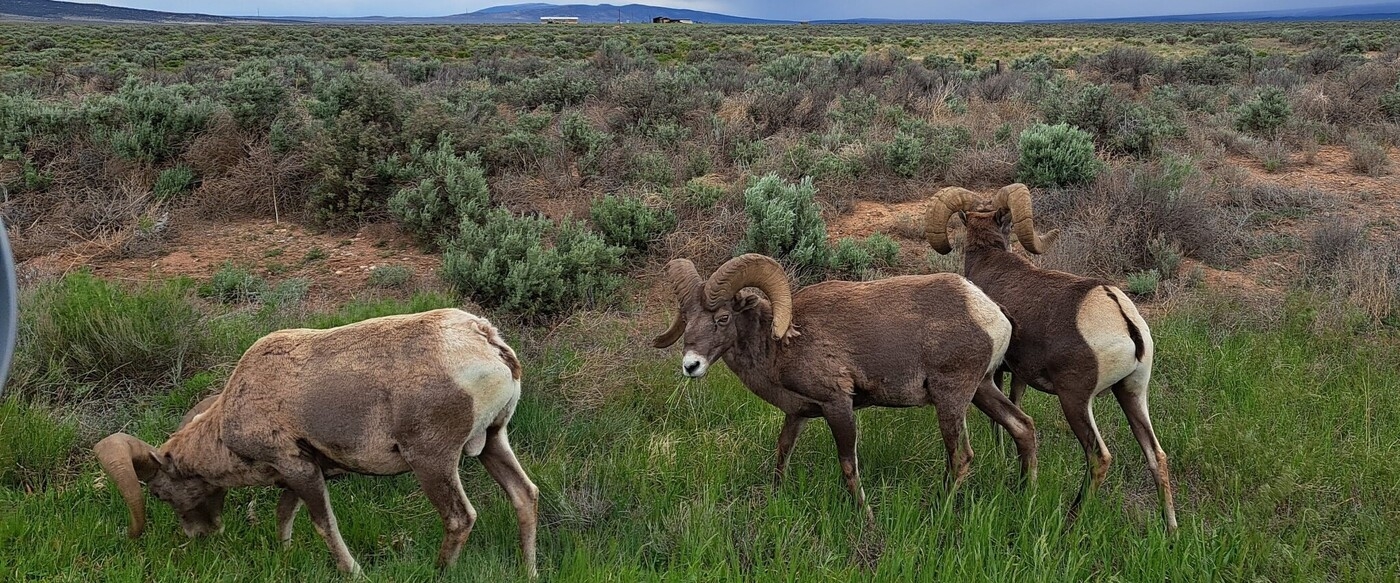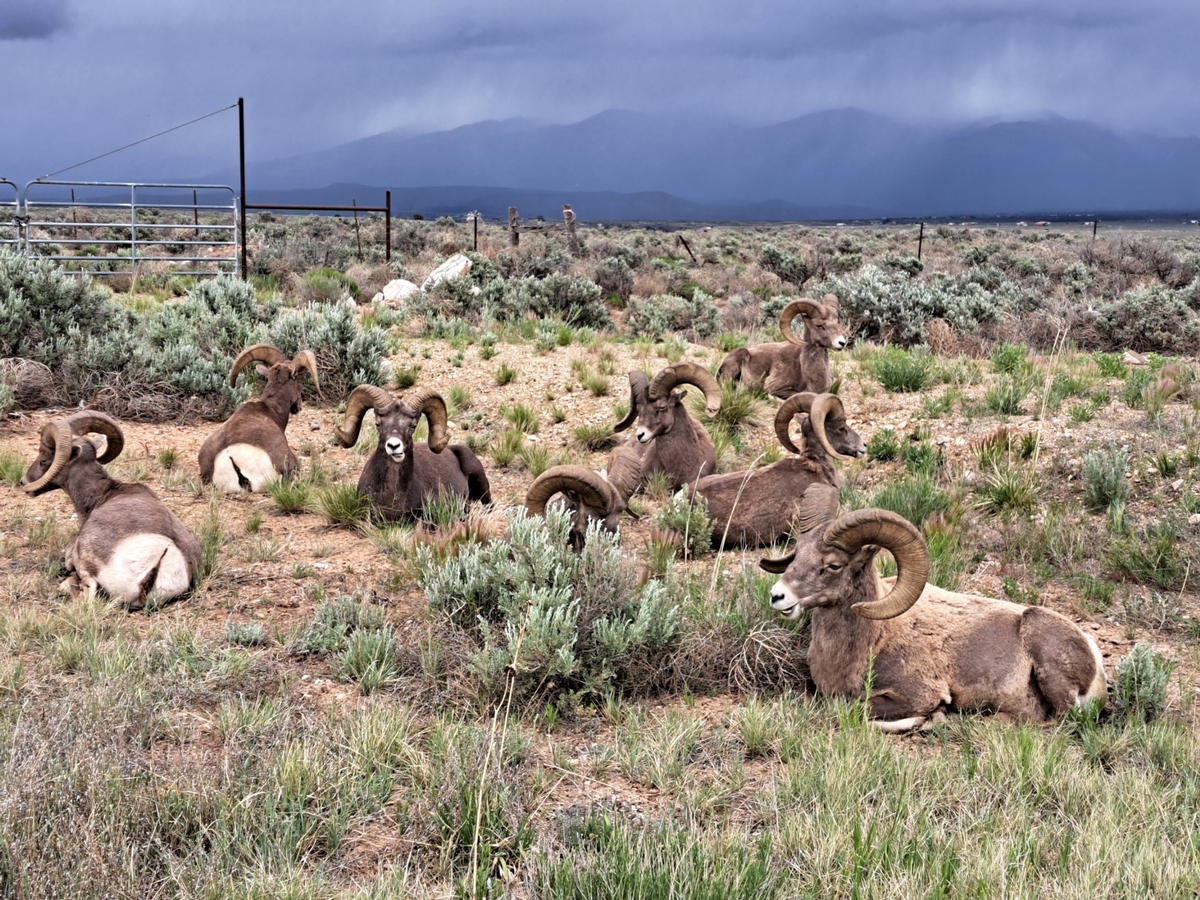
Big Horn Sheep Hunts

A bighorn sheep hunt around the Rio Grande Gorge in Taos, New Mexico, would be an unforgettable and challenging experience, combining the rugged beauty of the high desert with the excitement of pursuing a legendary big game animal.
Setting and Terrain
The Rio Grande Gorge, a dramatic 800-foot-deep canyon carved by the Rio Grande River, provides a stunning and unforgiving landscape. The area surrounding the gorge is a mix of high desert terrain, rugged cliffs, and sharp ridgelines, with juniper, pinon pine, and sagebrush scattered across the dry slopes. The region is known for its steep rock faces, arid conditions, and vast vistas, which offer both hunting opportunities and breathtaking views.
The high mesas and craggy cliffs are home to the desert bighorn sheep (Ovis canadensis mexicana), a subspecies known for its agility and ability to thrive in harsh, rocky environments. The sheep's natural habitat includes the high elevations above the Rio Grande, often making the hunt physically demanding.
Hunt Preparation
A successful bighorn sheep hunt requires physical fitness, as the terrain around the gorge is challenging. Hunters will need to be prepared for steep ascents, rocky scrambles, and long days in the wilderness. The bighorn sheep is known for its ability to blend into the rocky terrain, making spotting them a challenge. A hunter will need to rely on sharp eyesight, patience, and experience to track the animals.
Hunting in this area often requires obtaining a special permit through the New Mexico Department of Game and Fish, as bighorn sheep populations are managed closely to ensure sustainable numbers. It's essential to have the right equipment, including binoculars for spotting, a good rifle or bow, and suitable gear for trekking through rugged terrain.
The Hunt
The hunt itself is a test of endurance and strategy. After spotting bighorn sheep, the challenge lies in approaching them without alerting them to your presence. The steep, rocky cliffs make traditional stalking difficult, so hunters must be strategic, using the terrain to their advantage. It may require crawling, climbing, or finding alternative routes to approach without being seen or heard.
Bighorn sheep are notoriously cautious, and their keen senses make getting within range a challenge. The stalk can take hours, and the animals will often move between ledges and rocky outcroppings, forcing hunters to think on their feet and adapt their approach in real time.
The final moment of the hunt, when you’ve positioned yourself for a shot, is both exhilarating and nerve-wracking. Timing and precision are crucial, as the bighorn sheep is a tough and resilient animal. A successful shot may require patience and steadiness, especially if you're working with a rifle over longer distances or trying to maintain silence and accuracy with a bow.
The Landscape and Wildlife
While hunting bighorn sheep is the primary objective, the Rio Grande Gorge is teeming with other wildlife that adds to the experience. Mule deer, mountain lions, and coyotes are common, and the area is rich with birds of prey like golden eagles. The canyon's sweeping vistas of the Rio Grande, the surrounding high desert, and distant mountain ranges offer hunters a sense of isolation and connection to the land.
The sunsets here are stunning, with colors ranging from rich oranges to deep purples, casting a dramatic light over the jagged cliffs. Early mornings bring the crisp air and clear skies, while the quiet of the canyon, punctuated only by the occasional calls of wild animals, creates a sense of awe.
Conclusion
A bighorn sheep hunt around the Rio Grande Gorge near Taos, NM, is a unique and rewarding experience. The rugged landscape, the thrill of the hunt, and the opportunity to see these incredible animals in their natural habitat all contribute to what is sure to be a once-in-a-lifetime adventure for any hunter. But it also demands physical endurance, strategic planning, and respect for the wildness of the environment. This hunt offers not only the pursuit of an iconic animal but also the chance to experience one of New Mexico’s most beautiful and remote landscapes.
GMUs 49, 50 and 53 (Rio Grande Gorge) 3 Aug 10–24 2 Ram
GMUs 49, 50 and 53 (Rio Grande Gorge) 3 Sept 1–15 2 Ram
GMUs 49, 50 and 53 (Rio Grande Gorge) 3 Nov 1–15 1 Ram
